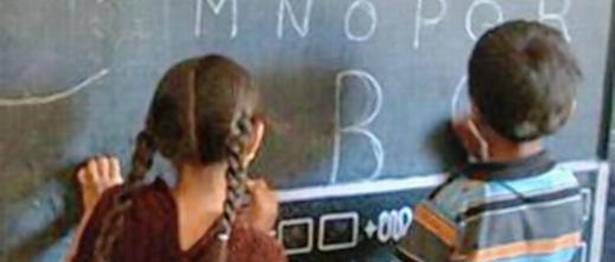To provide high quality education up to the 12th standard, the Budget outlay must be hiked to at least ₹5.6-lakh crore
The Budget proposed by Finance Minister Nirmala Sitaraman is ambitious and, in parts, daring. Its thrust on infrastructure, pitching for an expenditure of ₹100-lakh crore or $1.44 trillion is visionary and required. It is quite possible that much of the funding envisaged could be raised.
Better roads, railways, improved air and digital connectivity, assured water and gas supply to all, amongst several other measures, should contribute to improvements in other sectors of the economy. However, where the Budget proposal stumbles is in its lack of emphasis on education best evident in the modest hike proposed of 18.2 per cent for school education for 2019-20.
The centrality of education for any country to progress has been well-argued by Amartya Sen. In a speech delivered at the Commonwealth education conference in Edinburgh in 2003, he observed that economies in East Asia ‘firmly focussed on general expansion of education. Widespread participation in a global economy would have been hard to accomplish if people could not read or write, or produce according to specifications or instructions, or to have quality control.’
The 2019 Economic Survey makes the same point, stating that the demographic advantage India has had since 2005, and which will continue until 2056, ‘can be reaped only if education, skilling and employment opportunities are provided to the young population.’ That such opportunities are not being created is clear from what the survey highlights.
High drop-out rate
The drop-out rate, as the 2019 Economic Survey points out, continues to be very high, contributing to a never-ending stream of under-educated, low-skilled young people in their millions entering an increasingly technology-driven economy, which does not need them.
Expenditure on education as a percentage of the country’s GDP peaked at 3.1 per cent in 2014-15 and thereafter moved downward to between 2.8 and 3 per cent. As a percentage of expenditure in the social sector, education touched a high of 46.7 per cent in 2013-14, came down to a low of 39.9 per cent in 2016-17 before rising marginally to a little over 40 per cent in 2018-19.
India is poor because it is under-educated on a humongous scale leaving the country at the 130th spot out of 189 countries in the UNDP’s HDI rankings. China by contrast ranks 89th. The now far better educated 650 million comprising ASEAN have a higher GDP than India — $3.1 trillion to India’s $2.9 trillion — with a higher average HDI. It even attracts more FDI than India does.
The education system in India is in urgent need of an expensive and thorough revamp. Our schools in rural areas are in a parlous state. Absenteeism continues to be high among teachers who, even if they are present, are too ill-equipped to teach. Our extensive District Institutes of Education and Training, organised under stolid bureaucratic lines, are incapable of training teachers in basic pedagogical skills. Majority of our schools are ill-placed to harness modern technologies to improve the quality of education. Few schools in the country are capable of making the best of what web-based learning systems have to offer.
India has already wasted nearly three decades from the time economic liberalisation started, by neglecting to set its ‘education- house’ in order, thus frittering away a potential long-term demographic advantage of extraordinary proportions. In the process, it has created a massive problem for itself by giving rise to the largest number of uneducated and undereducated young people estimated — but nowhere accurately quantified — at 400-500 million.
The adage that one cannot manage what one cannot measure is so true of India. It would, therefore, be appropriate for the Finance Minister to do what no other government before has dared to so far — quantify the school-education challenge confronting India and show serious intent to tackle it in quick time.
If India is to be transformed economically by 2056 — when the Economic Survey forecasts the demographic dividend should end — India must change gears now and determinedly move away from the incrementalism of the past and firmly commit itself to providing high quality school education for all children right up to the 12th standard from now onwards. A good start would be for the Finance Minister to announce a Budget outlay for school education alone what the States and the Centre together spend on education at all levels — slightly over ₹5.6-lakh crore — in the last financial year.
[“source=thehindubusinessline”]









